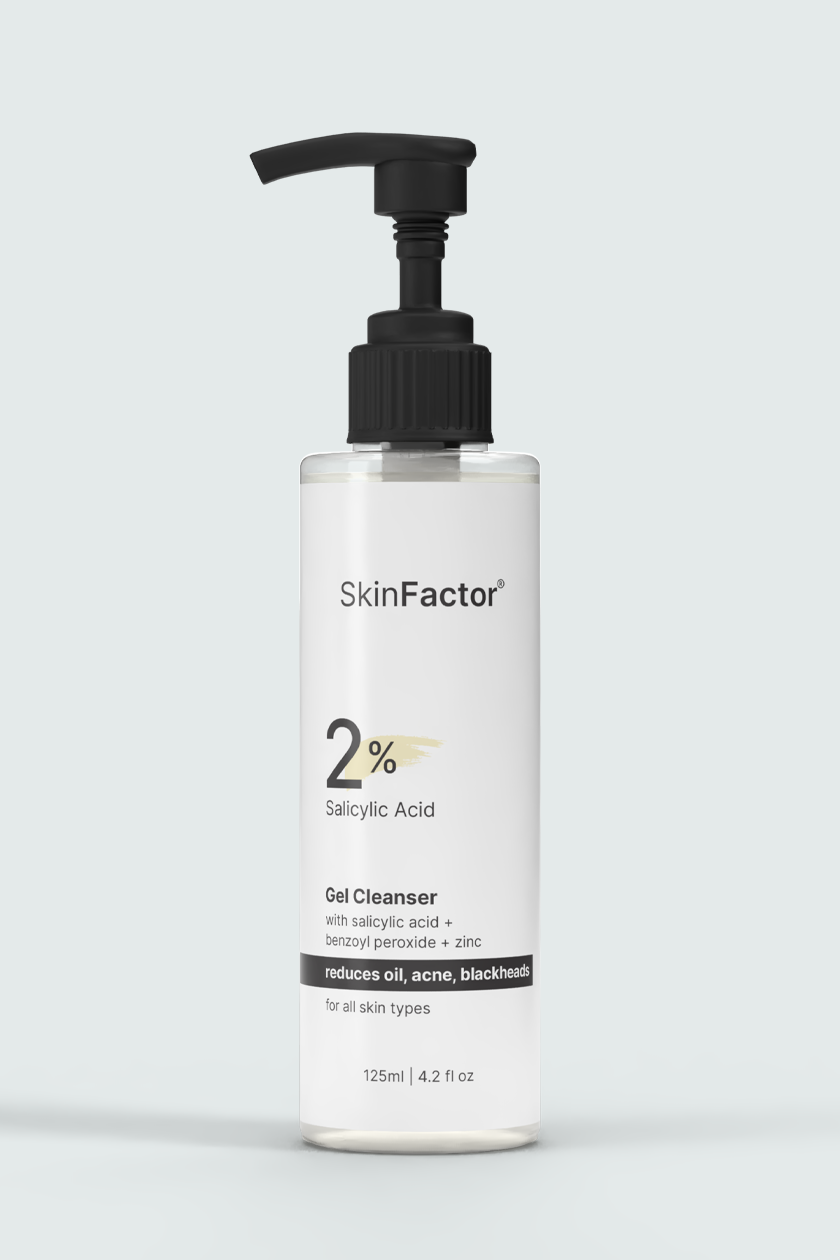Morning vs. Night: When Is the Best Time to Use Salicylic Acid Cleanser?

Salicylic acid cleansers have become a holy grail in skincare, especially for those battling acne, blackheads, oily skin, or clogged pores. But one of the most common questions is: When should I use it? Morning, night, or both?
The timing of your salicylic acid cleanser can make a big difference in how effective it is—and how your skin responds. In this guide, we’ll break down the science behind salicylic acid, explore its benefits, and explain whether morning, night, or twice-a-day use is best for you.
🔬 A Quick Refresher: What Is Salicylic Acid?
Salicylic acid is a beta-hydroxy acid (BHA), which means it’s oil-soluble. Unlike water-based exfoliants that stay on the skin’s surface, salicylic acid penetrates deep into the pores, dissolving excess sebum, dead skin cells, and impurities.
Key Benefits of Salicylic Acid Cleanser:
-
Unclogs pores to prevent blackheads and whiteheads
-
Reduces oil production for a matte look
-
Fights acne by reducing pore blockages and inflammation
-
Exfoliates gently for smoother skin texture
-
Improves product absorption for serums and moisturizers
🌞 Using Salicylic Acid Cleanser in the Morning
Why Morning Use Helps:
-
Removes Overnight Buildup
While you sleep, your skin produces oil, sheds dead cells, and accumulates bacteria. A salicylic acid cleanser in the morning clears this away and gives you a fresh base. -
Preps Skin for Makeup or Sunscreen
If you wear makeup or sunscreen daily, salicylic acid ensures pores are clean and reduces the chances of clogged pores later in the day. -
Controls Excess Oil During the Day
For people with oily or combination skin, a morning cleanse with salicylic acid keeps oil production under control, helping you avoid that midday greasy look.
Risks of Morning Use:
-
May cause dryness or irritation if your skin is already sensitive.
-
Increases sun sensitivity, so sunscreen is non-negotiable.
🌙 Using Salicylic Acid Cleanser at Night
Why Night Use Works Best for Many:
-
Removes Dirt, Oil & Makeup
Your skin is exposed to pollution, sunscreen, sweat, and makeup all day. Salicylic acid deeply cleanses at night, preventing all that buildup from settling in pores. -
Maximizes Cell Renewal
Skin naturally repairs itself overnight. Exfoliating with salicylic acid before bed enhances this process, helping active ingredients like serums and moisturizers work more effectively. -
Reduces Morning Breakouts
Using salicylic acid at night prevents pores from clogging overnight, so you wake up with clearer skin.
Risks of Night Use:
-
If followed by strong actives (like retinol or AHA serums), irritation may occur.
-
Over-cleansing at night can strip natural oils if paired with harsh scrubs.
🆚 Morning vs. Night: Which One Is Better?
The truth is, there’s no one-size-fits-all answer. The best time depends on your skin type, lifestyle, and skincare routine.
-
Oily Skin: Morning use can help control shine throughout the day.
-
Acne-Prone Skin: Night use is often better to prevent overnight pore clogging.
-
Combination Skin: Alternate—use it in the morning on oily days and at night on others.
-
Dry/Sensitive Skin: Night use only, and just 2–3 times per week, to prevent over-drying.
🧴 Can You Use Salicylic Acid Cleanser Twice a Day?
Yes—but with caution. Using it morning and night works for people with very oily or acne-prone skin, but it can be too much for sensitive or dry skin types.
Signs You’re Overusing It:
-
Excessive dryness or flakiness
-
Tight, uncomfortable feeling after washing
-
Increased redness or irritation
If this happens, cut back to once a day or every other day.
⚖️ Best Practices for Timing Your Cleanser
-
Pair with Sunscreen (Morning)
Always follow with at least SPF 30 after using salicylic acid in the morning. -
Hydrate Immediately (Morning & Night)
Use a moisturizer rich in hyaluronic acid, ceramides, or niacinamide to counter dryness. -
Don’t Mix Too Many Actives (Night)
If using retinol or glycolic acid, avoid salicylic acid cleanser on the same night to prevent irritation. -
Listen to Your Skin
Adjust usage frequency based on how your skin reacts.
📝 Sample Routines
Morning Routine with Salicylic Acid Cleanser
-
Hydrating Toner
-
Lightweight Moisturizer
-
Broad-Spectrum Sunscreen
Night Routine with Salicylic Acid Cleanser
-
Salicylic Acid Cleanser
-
Hydrating or Soothing Serum (like hyaluronic acid or niacinamide)
-
Nourishing Moisturizer
🔄 Combining Morning and Night
If your skin can handle it, try this:
-
Morning: Salicylic acid cleanser + sunscreen (great for oily skin control).
-
Night: Gentle hydrating cleanser most nights, salicylic acid cleanser 3–4 nights a week.
This balance prevents over-drying while still delivering acne-fighting benefits.
✅ Final Verdict
So, should you use salicylic acid cleanser in the morning or at night?
-
If you want oil control during the day → Morning.
-
If you want deep cleansing and acne prevention overnight → Night.
-
If your skin is very oily and resilient → Both morning and night may work.
-
If you have sensitive or dry skin → Stick to nighttime use only, a few times per week.








